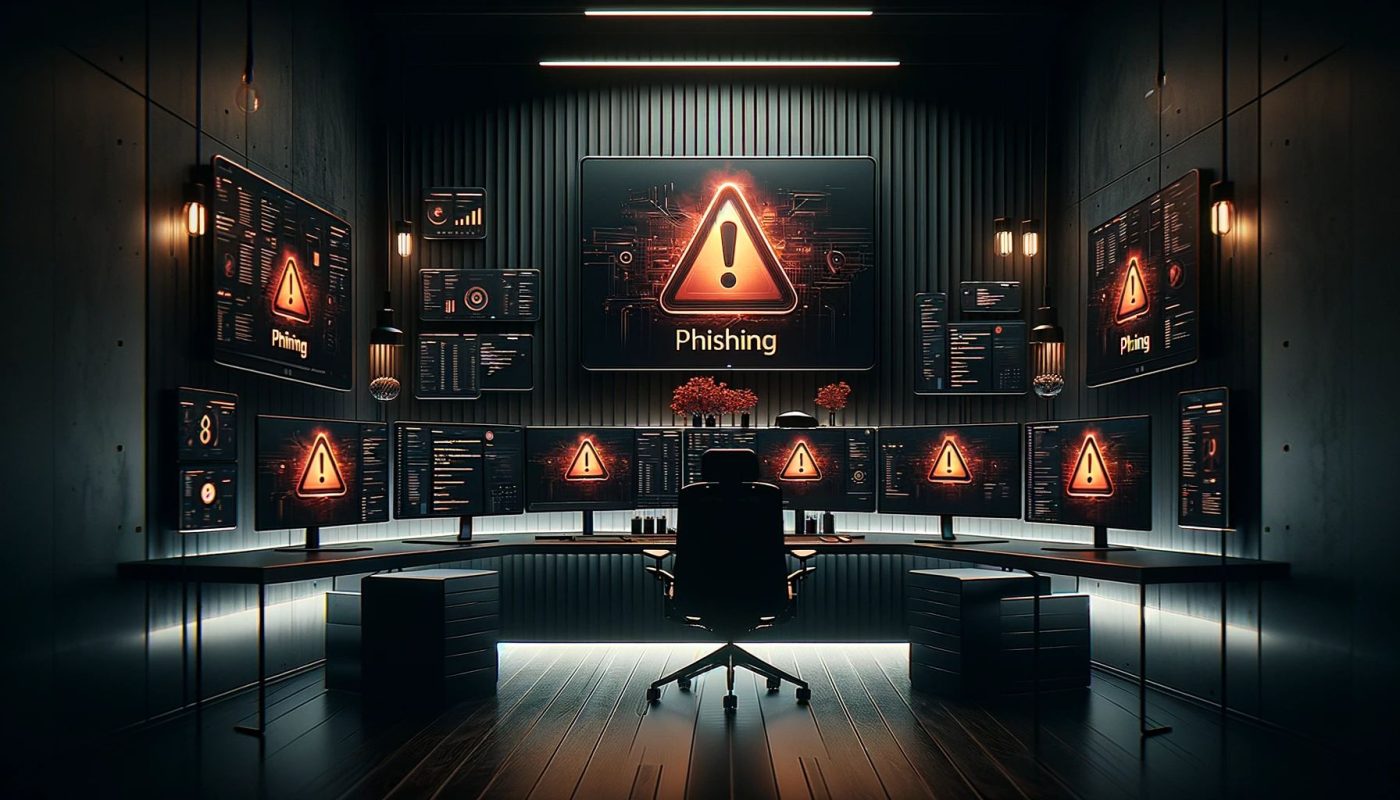Perhaps you’ve recently glanced at your phone to find an unexpected message from a ‘recruiting company,’ with an unfamiliar number. Rest assured, you’re not alone. Such messages are the hooks cast by modern-day phishers, and they mark the beginning of a journey into the murky waters of cyber deception.
In 2023, the digital landscape continues to evolve at a breakneck speed. Phishing attacks remain a pervasive threat, exploiting various channels such as email, social media, and even SMS and messaging platforms to deceive individuals into providing sensitive data. Thankfully, by arming yourself with the latest knowledge and tools, you can guard against these potentially devastating attacks. Let’s delve deep into the ways to secure yourself from phishing attacks in 2024.
Recognize the Red Flags
Understanding the common signs of phishing attacks is your first line of defense. Be on the lookout for:
- Unexpected Requests for Sensitive Information
Banks and legitimate organizations will never ask for your personal information via email or text message. Be skeptical of unsolicited communications requesting such details. - Misspelled URLs
Phishers often use slightly altered URLs to deceive users. Double-check the URL to ensure it corresponds to the authentic website. - Unprofessional Language
Emails riddled with poor grammar and spelling errors are often a telltale sign of phishing attempts. - Check all the links
It’s important to check each link inside the email before clicking on it. Check that you have a security certificate (green padlock or “https” symbol in the address bar). The absence of a certificate may indicate an unsecured site. - Urgency or threat
Attackers often use scare tactics or urgency to encourage users to act quickly without thinking. Be vigilant if an email or message threatens you with negative consequences if you do not immediately provide information or click on a link. - Beware of attachments
Phishing emails may contain malicious attachments. Do not open attachments from unreliable or unknown sources, as they may contain malicious software.
https://youtu.be/hrpkZqzhwbM?si=uxTToKPp2s8OqXRA
Email Filtering and Authentication
Implementing email filtering and authentication solutions such as SPF (Sender Policy Framework), DKIM (DomainKeys Identified Mail), and DMARC (Domain-based Message Authentication, Reporting, and Conformance) are vital email authentication protocols that work together to secure email communications and protect against phishing and spam. SPF allows domain administrators to specify which IP addresses are authorized to send emails from their domain, thereby helping to reduce spam and phishing emails; however, it has the limitation of checking only the envelope sender address. DKIM, on the other hand, adds a digital signature to the email header, verifying the email’s origin and ensuring its integrity during transit, which aids in authenticating the email’s source, although it doesn’t guarantee the email comes from a trusted server. Building upon SPF and DKIM, DMARC allows domain owners to dictate how email receivers should handle emails that fail SPF or DKIM checks, enhancing email authentication substantially. Implementing a strategy utilizing all three can greatly fortify email security, mitigating the risk of phishing and spoofing attacks by ensuring that only authenticated emails reach the inbox of the recipients.
Online Protection
When surfing online use this advice to protect your data:
- Advanced Browser Extensions
Use browser extensions that provide an additional layer of security by warning you about known phishing sites. Extensions such as HTTPS Everywhere and Norton Safe Web are excellent options. - Multi-Factor Authentication (MFA)
Leverage MFA to add an extra layer of security. Even if a phisher obtains your password, they would still need a second form of verification to access your account. - Regularly Update Your Software
Ensure that all your software, including your operating system, browser, and antivirus, are up-to-date to benefit from the latest security patches. - Education and Training
Participate in educational workshops and online courses to stay informed about the latest phishing techniques. Platforms like Coursera and Udemy offer courses on cybersecurity. - Back-Up Your Data
Regularly back up your data to protect yourself from ransomware, which is often propagated through phishing emails. - Mobile Phishing
Be wary of phishing attacks on mobile platforms. Be cautious while clicking on links in SMS messages and verify the authenticity of apps before downloading them from app stores.
While all this advice can help you to avoid a large proportion of fishing attacks, it is still advisable, if you have the opportunity, to consult a cybersecurity expert to evaluate your existing security posture and recommend improvements based on the latest threat intelligence. You can also take out insurance against cyber-attacks, which offers you both technical and financial support in the event of an attack.
And if, despite all these precautions, you still fall prey to a cyber-attack, it is very important to report these attacks either to the group or to the local cybercrime unit.
Conclusion
As we navigate the intricacies of the digital world in 2023, it is incumbent upon us to remain a step ahead of phishers. By implementing sophisticated security measures and staying informed about the evolving tactics of cybercriminals, we can ensure a safer online environment for all.
We invite you to share your experiences and insights on this pressing issue. Have you encountered any novel phishing techniques recently? How do you maintain a robust defense against phishing attacks? Join the conversation below to foster a community of cyber-aware individuals. Together, we can forge a path to a secure digital future.




Hi Thibault, I feel significantly more empowered and informed about my digital security after reading your article. You did an excellent job of breaking down complex cybersecurity concepts into understandable terms. I particularly appreciated the practical tips on spotting phishing attempts in your video. It’s alarming yet vital to know how sophisticated these attacks have become, and this guide has definitely heightened my awareness. Thank you!